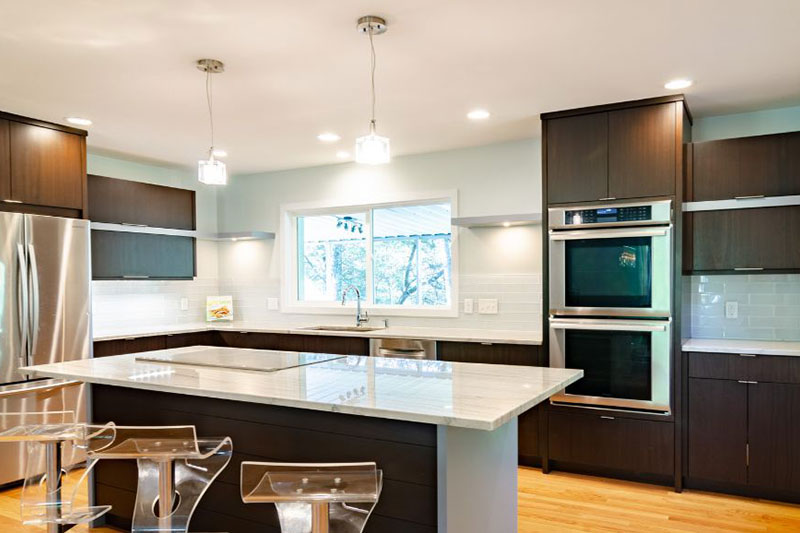
The Art of Layered Lighting: Creating Depth and Ambiance
Lighting is a cornerstone of design that often goes unnoticed until it’s done wrong. Proper lighting transforms spaces, enhances functionality, and creates emotional connections. Among the myriad lighting techniques, layered lighting stands out as an art form, combining multiple light sources to achieve depth, dimension, and ambiance in any environment. This blog delves into the nuances of layered lighting and its impact on design.
Understanding Layered Lighting
Layered lighting is the strategic use of different types of lighting—ambient, task, and accent—to achieve a harmonious and versatile illumination scheme. Each layer serves a distinct purpose, and together, they create a balanced and visually appealing space.
1. Ambient Lighting: The Foundation
Ambient lighting is the base layer, providing overall illumination for a room. It ensures a comfortable level of brightness and sets the tone for the space. Common sources of ambient lighting include:
- Ceiling-mounted fixtures
- Chandeliers
- Recessed lights
- Natural light from windows
The key to effective ambient lighting is achieving uniformity without overpowering the other layers.
2. Task Lighting: Functionality First
Task lighting is focused illumination that aids in performing specific activities such as reading, cooking, or working. It’s about practicality and precision. Examples include:
- Desk lamps
- Under-cabinet kitchen lights
- Vanity lights in bathrooms
The placement of task lighting is crucial to avoid shadows and glare, ensuring the task at hand is performed with ease.
3. Accent Lighting: The Highlight
Accent lighting adds drama and focuses attention on specific elements within a space. It’s used to highlight artwork, architectural features, or decorative objects. Popular choices for accent lighting include:
- Track lights
- Wall sconces
- LED strip lights
Accent lighting should be brighter than ambient lighting to create contrast and draw the eye to the intended focal point.
The Importance of Layered Lighting in Design
Creating Depth and Dimension
Layered lighting adds depth to a space by creating contrasts between light and shadow. This interplay enhances the three-dimensional quality of a room, making it feel more dynamic and inviting.
Enhancing Mood and Ambiance
Lighting significantly influences mood. Warm tones create a cozy and intimate atmosphere, while cooler tones foster focus and energy. Layered lighting allows designers to tailor the ambiance to the intended use of the space.
Flexibility and Functionality
With layered lighting, spaces can adapt to different needs and occasions. For example, a living room can transition from a bright, functional space during the day to a soft, relaxing environment in the evening by adjusting the layers.
Highlighting Design Elements
Accent lighting is instrumental in drawing attention to architectural details, textures, and colors. It brings out the finer aspects of design that might otherwise go unnoticed.
Tips for Achieving Perfect Layered Lighting
- Plan with Purpose: Begin with the function of the space. Consider how the room will be used and what activities will take place.
- Use Dimmers: Incorporate dimmer switches to adjust the intensity of each layer, allowing for greater control over the ambiance.
- Mix Light Sources: Combine natural and artificial light for a balanced and dynamic look.
- Mind the Bulbs: Choose bulbs with the right color temperature and brightness to complement the design.
- Layer Strategically: Avoid cluttering the space with too many fixtures. Each light source should have a purpose and complement the overall design.
The Role of Technology in Layered Lighting
Modern lighting design leverages technology to enhance functionality and aesthetic appeal. Smart lighting systems allow users to control and customize their lighting layers with ease. Features such as color-changing LEDs, automated schedules, and voice control make it easier than ever to achieve the perfect lighting scheme.
Real-World Applications of Layered Lighting
Residential Spaces
In homes, layered lighting creates a comfortable and personalized environment. For example, in a living room, ambient lighting from a central fixture, task lighting from floor lamps, and accent lighting highlighting artwork work together to create a cohesive design.
Commercial Spaces
In retail and hospitality, layered lighting enhances customer experiences. Stores use accent lighting to highlight products, while ambient and task lighting ensure a pleasant and functional environment.
Outdoor Spaces
Layered lighting isn’t limited to interiors. Outdoor spaces benefit from a combination of ambient lighting for safety, task lighting for pathways, and accent lighting for landscaping features.
Conclusion: The ASEAN Light + Design Expo 2025
The art of layered lighting continues to evolve, driven by innovations in technology and design. For professionals and enthusiasts looking to explore the latest trends and advancements in lighting, ASEAN Light + Design Expo is an unmissable event. Scheduled from 17-19 September 2025 at the IMPACT Exhibition Centre, Bangkok, Thailand, this expo brings together industry leaders, designers, and innovators to showcase cutting-edge lighting solutions and design concepts.
From smart lighting systems to sustainable designs, the expo provides a platform to discover how layered lighting can redefine spaces. Whether you’re an architect, interior designer, or lighting enthusiast, ASEAN Light + Design Expo is your gateway to mastering the art of lighting in the modern world.

 ไทย
ไทย
 中文
中文

